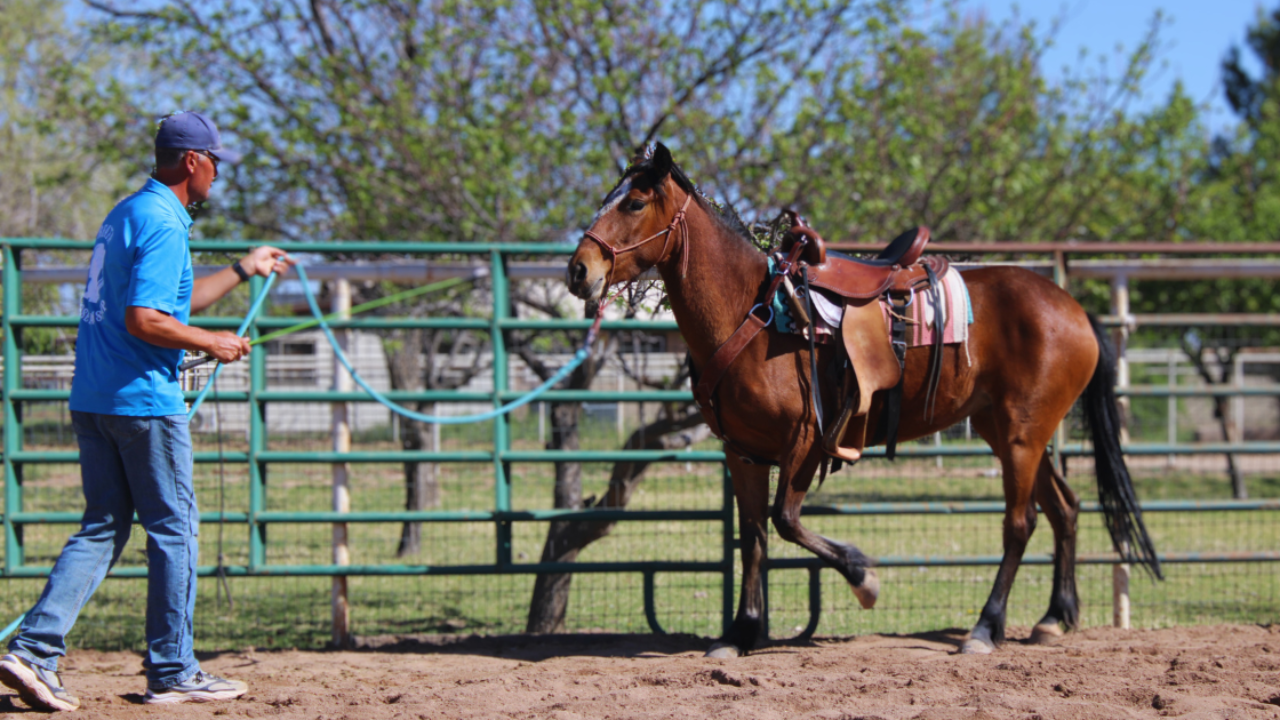Q&A: My Horse is Pushy While Leading
Aug 22, 2023
Q: My horse has a tendency to be very pushy when I’m leading him. Although he does well with the backing exercises, I can’t seem to set him at a good pace whilst going from point A to point B. Any tips?
A: Pushy horses during leading may be caused by two main reasons: anxiety or disrespect. If your horse has anxiety, he may be too distracted with other things besides you to pay attention to his body position in relation to yours, causing him to get too “pushy”. If your horse is disrespectful, he will push into your space because he doesn’t respect you as his leader, and simply will walk into and over you at will until he learns to respect your space. In either case, it’s important that your horse follows behind you at the speed and distance you set. It’s never ok for your horse to lead you or to get into your space when you didn’t ask him to. If your horse does back up when you walk towards him and ask him to back, as well as will back away from you, creating more space between you and him when asked, then the issue is he is not able to remain focused on you while leading him forward. Start by leading him closely next to you and expecting him to stop when you stop and go when you go, and at the speed you go. If you stop and he doesn’t stop, jerk down on the lead rope (make sure you are using a stiff rope halter and weighted lead rope. I recommend a ¼” width stiff rope halter and 9/16” lead rope that should be as long as the distance you’d like him to learn to stay from you). For training, I used a lead rope that is 14 feet long, but take care to never get caught being wrapped in any manner with your feet, hands, or other body parts. I also like to use a 4-foot stick from a training stick and string as a second or third pressure cue. For example, with my horse being led close to me, my first cue for him to stop is to stop myself. Next is to shake the lead rope lightly, and then to jerk down on the lead rope. If my horse struggles to respond, I might then tap his chest with the stick. This is just one example of a sequence of cueing my horse to stop and back up while being led. Your sequence of cueing doesn’t have to be exactly this way, but follow the rule of thumb of asking lightly and building your pressure slowly and consistently to teach the concept. Once your horse understands the cues and knows how to back up and to back out of your space and to lead along side or behind you at the speed and distance you choose, then your cueing can go from a very light to a much heavier cue more quickly. This will teach your horse to pay attention and say “yes, sir” or “yes, ma’am” immediately off your light cue.
Once your horse will stop and go when you ask while being led next to you, start asking the same from further away, lengthening the lead rope and asking for more distance between you and your horse. Remember that the distance you want your horse to be from you depends entirely on you. The correct answer to the question I often get asked, “How close should my horse be when being led?” is “However close you want him to be”. As you gain more respect from your horse, you can ask for greater distances, and can even change speeds quickly to test further. Horses challenged with high anxiety or disrespect will take extensive and consistent effort to teach them to not be pushy. Some horses will constantly challenge your space and hierarchical order and will need more work and maintenance. Some horses, once learning the concepts, will be golden without much need for maintenance or further training.

